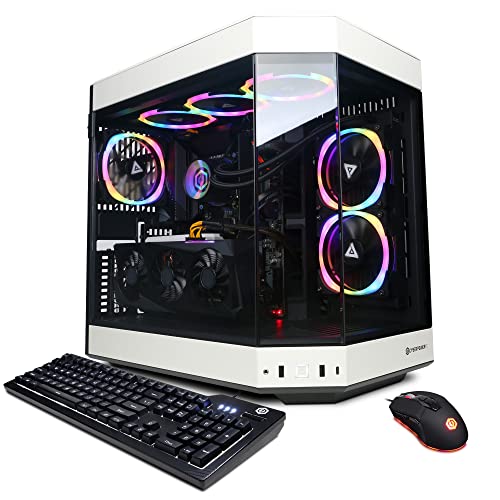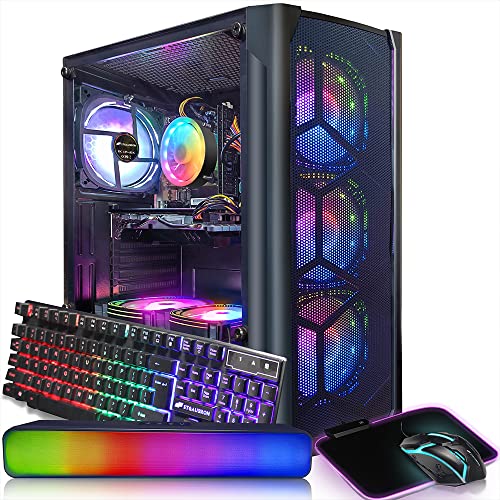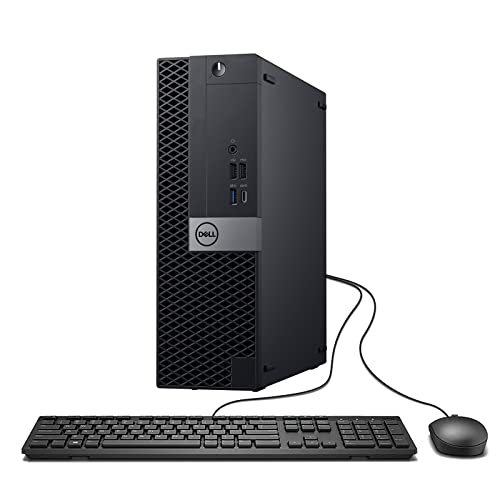Enabling the Fusion of Digital and Physical Worlds
Augmented Reality (AR) is revolutionizing how we interact with data, merging digital information with our physical environments. For developers and designers working in this cutting-edge field, a dedicated, high-performance PC can be the creative engine that transforms innovative ideas into immersive experiences. This comprehensive guide details how to build a custom AR development workstation optimized for rapid prototyping, real-time rendering, and seamless integration of virtual overlays with physical surroundings.
---
#### 1. High-Performance Processing: The Core of AR Efficiency
A powerful CPU is crucial for managing the computational demands of AR development.
- **Multi-Core, High-Frequency Processors:**
Opt for a processor from Intel’s Core i9 or AMD’s Ryzen 9/Threadripper series that offers multiple cores and high clock speeds. This ensures rapid compilation of AR applications, smooth multitasking across development tools, and efficient processing of real-time sensor data.
- **Hardware Virtualization and Emulation:**
With robust virtualization support such as Intel VT-x or AMD-V, the system can simulate multiple AR environments, test devices in isolated virtual machines, and run containerized applications concurrently—crucial for cross-platform AR development.
- **Optimized Overclocking:**
Under controlled conditions with advanced cooling, mild overclocking can further boost performance during resource-intensive tasks like real-time data processing and interactive modeling.
---
#### 2. Advanced GPU Acceleration: Driving Real-Time Visuals
In AR development, the GPU is instrumental in delivering high-fidelity graphics and ensuring low-latency rendering of digital overlays.
- **Cutting-Edge Graphics Cards:**
Invest in professional-grade GPUs such as NVIDIA’s GeForce RTX or AMD’s Radeon RX series that offer ample VRAM and advanced rendering capabilities, including ray tracing and shader performance. These graphics cards enable smooth, realistic rendering of 3D assets and dynamic lighting effects necessary for immersive AR experiences.
- **GPU Compute Frameworks:**
Utilize compute frameworks like CUDA, DirectX 12 Ultimate, and Vulkan to accelerate visual computations and AI-based image enhancements. GPU acceleration minimizes latency and accelerates tasks like object recognition and spatial mapping, which are key in AR applications.
---
#### 3. Ample Memory and Rapid Storage: Handling Data-Intensive Workflows
AR development projects can involve complex 3D models, high-resolution textures, real-time sensor feeds, and large code repositories.
- **High-Capacity, High-Speed RAM:**
Equip your workstation with at least 32GB of DDR4 or DDR5 memory; advanced projects may require 64GB or more. This memory capacity supports simultaneous running of AR development environments, simulation tools, and multiple virtual devices without performance degradation.
- **NVMe SSDs for Ultra-Fast Storage:**
Use NVMe SSDs as your primary storage to ensure rapid boot times, quick loading of development software, and almost instantaneous access to large asset libraries. A hybrid storage approach—with additional SATA SSDs or RAID-configured HDDs for archival purposes—balances speed and capacity, safeguarding both active projects and historical data for future reference.
---
#### 4. Connectivity and Peripheral Integration: Bridging the Real with the Virtual
An effective AR development system must seamlessly integrate with sensors, cameras, and other peripheral devices to capture and interact with real-world data.
- **Robust I/O Options:**
Choose a motherboard with numerous USB 3.2 ports, Thunderbolt interfaces, and high-speed Ethernet. These ports are essential for connecting external devices such as depth sensors, motion trackers, high-definition cameras, and calibration tools that capture real-world input for AR applications.
- **Wireless and Short-Range Communication:**
Integrated Wi-Fi 6 and Bluetooth adapters facilitate over-the-air data transfer and communication with nearby AR devices, enabling developers to experiment with interactive and mobile AR solutions.
- **Multi-Monitor and Touchscreen Integration:**
A multi-monitor setup greatly expands workspace efficiency. One screen can display the primary AR development environment while secondary screens show real-time sensor data or debugging dashboards. Optional touchscreen monitors can simulate interactive AR interfaces, providing valuable feedback during the development process.
---
#### 5. Cooling, Stability, and 24/7 Reliability: Maintaining Optimal Performance
Continuous, intensive AR development demands a system that remains stable under extended load.
- **Efficient Thermal Management:**
Invest in advanced air cooling or a custom liquid cooling loop to keep the CPU and GPU temperatures within safe limits during prolonged testing and rendering sessions. A well-designed chassis with optimized airflow, smart fan controllers, and dust filters ensures that the system operates quietly and reliably—critical in a development environment where interruptions can cause delays.
- **Stable Power Delivery:**
A modular, 80 PLUS Gold or Platinum certified power supply with sufficient wattage overhead guarantees clean, stable power. For critical development setups, an uninterruptible power supply (UPS) is recommended to prevent data loss during power fluctuations or outages.
---
#### 6. Optimized Software Environment and Development Tools
A streamlined software setup is as important as hardware when building an AR development workstation.
- **Dedicated Operating System:**
Use a clean, dedicated operating system—whether a customized Windows build or a Linux distribution optimized for real-time processing—that minimizes background tasks and maximizes resource allocation for AR development tools.
- **Industry-Standard AR Development Platforms:**
Integrate leading AR frameworks and development tools such as Unity with AR Foundation, Unreal Engine, or specialized AR SDKs. Regular updates of drivers, firmware, and software tools ensure that your system remains compatible with emerging AR standards and cutting-edge features.
- **Virtualization and Remote Testing:**
Containerization and virtualization tools like Docker or VMware allow you to create isolated testing environments for different AR projects, streamlining deployment and enabling seamless experimentation across varied scenarios.
---
#### 7. Future-Proofing and Scalability: Designing for Tomorrow’s AR Innovations
As AR technology continues to evolve, designing your workstation with scalability in mind ensures that your system remains on the cutting edge.
- **Modular and Upgradeable Architecture:**
Select a motherboard with multiple DIMM slots, additional PCIe lanes, and extensive storage connectors. This approach enables easy upgrades—be it increasing RAM capacity, adding additional GPUs for enhanced processing, or integrating new I/O devices—as new AR technologies emerge.
- **Hybrid Cloud Integration:**
Consider integrating local development with cloud-based rendering and data processing services, offering additional scalability during peak workloads and ensuring that your system adapts to large-scale AR projects.
- **Regular Performance Assessment:**
Continuous benchmarking and performance monitoring help you identify system bottlenecks early, guiding planned upgrades and ensuring your AR workstation evolves in step with technological advancements.
---
#### Conclusion: Bridging the Digital and Physical Worlds
A custom PC for augmented reality development is more than a high-performance machine; it is the creative cornerstone that empowers innovators to bring digital overlays into the real world. By carefully integrating a multi-core, high-frequency CPU, cutting-edge GPU acceleration, ample high-speed memory and storage, versatile connectivity, and robust cooling in an optimized and scalable design, you create a workstation that accelerates AR development from concept to deployment. This future-proof system is built to inspire innovation, reduce latency, and deliver immersive, interactive experiences—paving the way for the next era of digital transformation.
---
### SEO Keywords:
custom PC for AR development, augmented reality workstation, high-performance AR PC, multi-core CPU for AR, professional GPU for AR development, NVMe SSD AR development, scalable AR workstation, low-latency AR PC, modular AR system, future-proof AR development PC, multi-monitor AR workspace, real-time AR development computer
View our related products
See more



Custom PC for Augmented Reality (AR) Development
Related Articles
Essential High-Performance PC Components You Need Now
Upgrade your setup with the must-have parts for unbeatable gaming and productivity
Top Picks for Best High-Performance PCs
Find the perfect power machine for gaming, work, or creative projects
Your Guide to the Best High-Performance PCs
Find the Right PC for Your Gaming and Creative Needs
View our related products
See more





